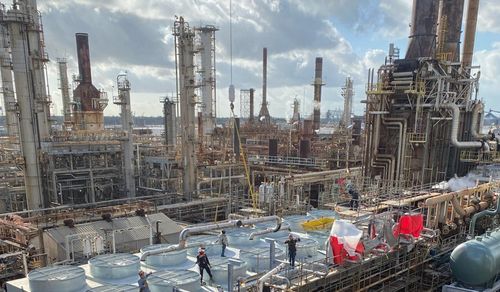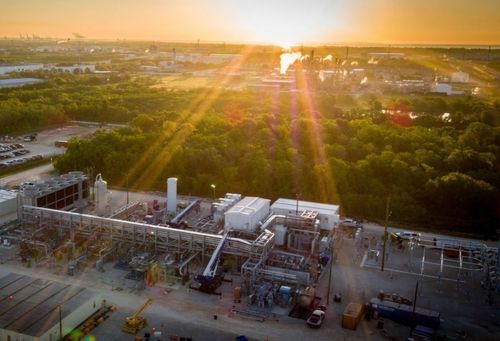DG Fuels is charting a plan to build a proprietary network of 30 to 50 sustainable aviation fuel (SAF) production facilities in North America, CEO Michael Darcy said in an interview.
The Washington, D.C.-based company will pursue a combination of debt and equity on a case-by-case basis to fund the projects, Darcy explained, with financings underway now for the firm’s initial project in Louisiana and a second facility in Maine. The Louisiana facility recently inked a USD 4bn offtake agreement with an undisclosed investment grade industrial buyer.
The company is working with Guggenheim and Stephens as financial advisors, Darcy said. About 60 people hold equity in the company; Darcy and the founding team hold a majority stake.
In the coming months DG Fuels will likely make announcements about more SAF plants in the US and British Columbia, Darcy said. Site negotiations are underway and each project is its own subsidiary of the parent company.
“There’s clearly a good return of what we refer to as the ‘project level,’ and then we have the parent company,” Darcy said. “We have strategic investment at the parent and now we’re looking at strategic investment at the project level.”
Huge demand, low supply
DG Fuels produces SAF from cellulosic biomass feedstock, a technology that does not need sequestration of CO2 because natural gas is not used.
“We like to say it’s the corn cob, not the corn,” Darcy said. The company can also use timber waste, waxes, and renewable power as an important source of energy.
The company gets about 4.5 barrels of SAF for every ton of biomass feedstock, which is roughly three to four times the industry average, Darcy said.
“Practical scale” for a facility is 12,000 to 15,000 barrels a day, Darcy said. That’s big enough to be commercialized without stressing the electrical grid with power demand.
Despite the company’s advantages, there is “plenty of room” for other producers to come into the SAF space, Darcy said.
“Right now, the market for SAF is gigantic and the supply is minimal,” Darcy said. “Companies like us are able to pick and choose high-quality offtakers.”
DG Fuels includes Delta Airlines, Air France and General Electric as committed offtakers.
Multi-tasking
DG Fuels is “always engaged in some level of capital raise for construction of facilities and detailed engineering,” Darcy said. “There’s always more engineering to be done.”
Some of the financing has already been completed, but Darcy declined to go into additional detail. After Louisiana, the company will quickly follow up with Maine.
HydrogenPro AS recently announced that it would join Black & Veatch and Energy Vault in financing the remaining capital requirements of DG Fuels’ project in Louisiana, which is expected to be completed in mid-2022.
Most of the engineering work in Louisiana is transferable to the company’s project in Maine. Darcy likened the facilities’ build-out to a class of ships: once the first is completed, the second and third can be built almost concurrently.
“There will be a point where we won’t be building one at a time,” Darcy said.
The opportunity for funders to participate is broad in the SAF space, Darcy said. There is a crossover of good economics and ESG, so strategics, industrials, private equity and other pure financial players can all be involved.
The broad base of capital eager to participate in companies that are innovative — but not too innovative as to scare investors — is indicative of the industry’s ability to secure offtakers and feedstock.
Storing power
It’s one thing to acknowledge the need for reduction of carbon, but hard work is required ahead, Darcy said.
“The low-hanging fruit has been done,” he said of the renewables industry. “Now it’s not really about the power, it’s about the storage of power.”
DG Fuels is an offtaker of non-peak renewable power to displace fossil fuel energy. But baseload renewable power is becoming available almost anywhere.
The Maine project will use stranded hydroelectric power, Louisiana will use solar, and projects in the Midwest will use wind, Darcy said. Additionally, geothermal power is “starting to become a very real opportunity,” he added.
Deploying broadly with renewable power gets past the issues of variability of renewable power at a reasonable cost, he said.







